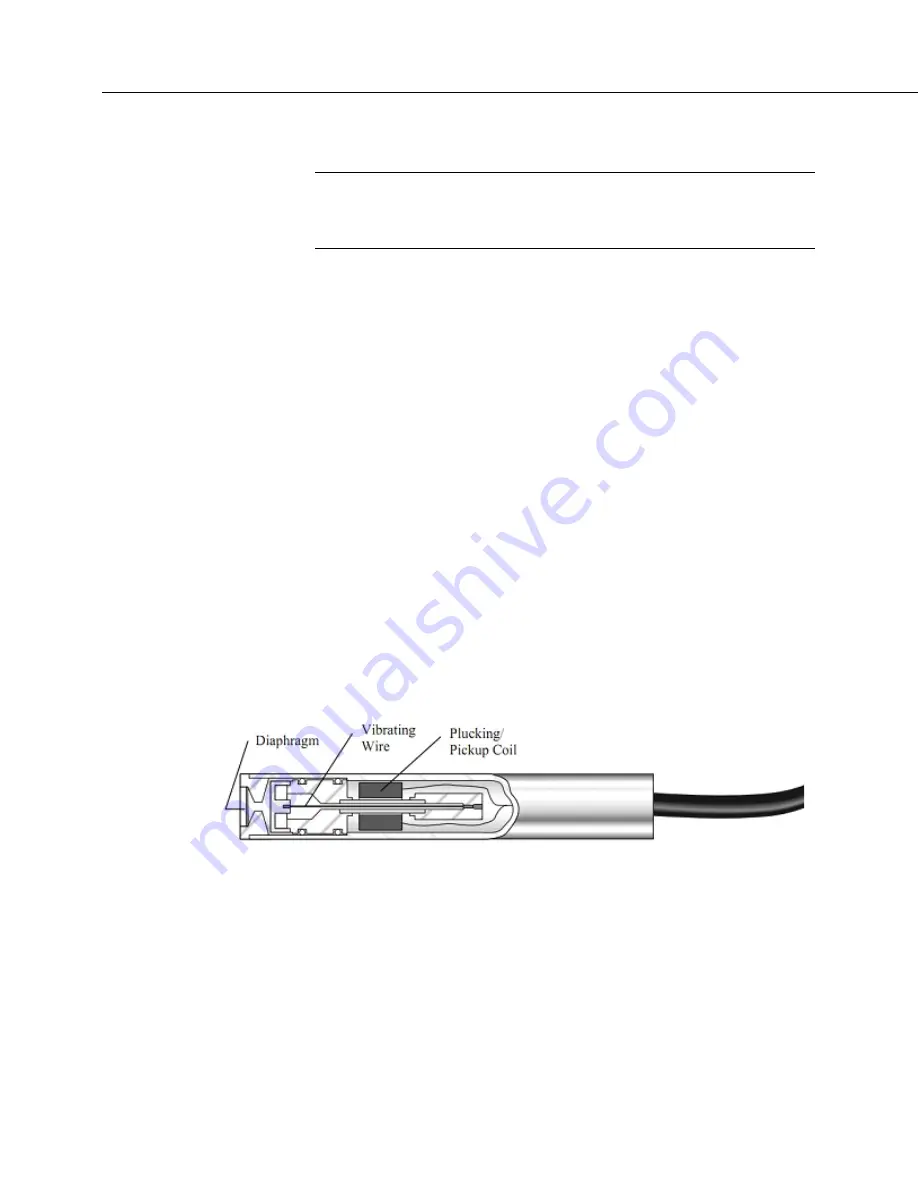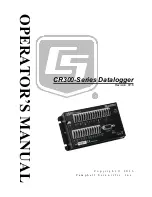
Section 8. Operation
382
8.1.4 Vibrating Wire Measurements — Details
Related Topics:
• Vibrating Wire Measurements — Specifications
•
Vibrating Wire Measurements — Overview
(p. 73)
•
Vibrating Wire Measurements — Details
(p. 382)
The CR800 can measure vibrating wire or vibrating-strip sensors, including strain
gages, pressure transducers, piezometers, tilt meters, crack meters, and load cells.
These sensors are used in structural, hydrological, and geotechnical applications
because of their stability, accuracy, and durability. The CR800 can measure
vibrating wire sensors through specialized interface modules. More sensors can
be measured by using multiplexers (see
Analog Input Modules — List
(p. 562))
.
The figure
Vibrating Wire Sensor
(p. 382)
illustrates how a basic sensor is put
together. To make a measurement, plucking and pickup coils are excited with a
swept frequency
(p. 517).
The ideal behavior then is that all non-resonant frequencies
quickly decay, and the resonant frequency continues. As the resonant frequency
cuts the lines of flux in the pickup coil, the same frequency is induced on the
signal wires in the cable connecting the sensor to the CR800 or interface.
Measuring the resonant frequency by means of period averaging is the classic
technique, but Campbell Scientific has developed static and dynamic spectral-
analysis techniques (
VSPECT
(p. 521))
that produce superior noise rejection, higher
resolution, diagnostic data, and, in the case of dynamic VSPECT, measurements
up to 333.3 Hz.
A resistive-thermometer device (thermistor or RTD), which is included in most
vibrating wire sensor housings, can be measured to compensate for temperature
errors in the measurement.
FIGURE 89: Vibrating Wire Sensor
8.1.4.1 Time-Domain Measurement
Although obsolete in many applications, time-domain period-averaging vibrating
wire measurements can be made on
H L
terminals. The
VibratingWire()
instruction makes the measurement. Measurements can be made directly on
these terminals, but usually are made through a vibrating wire interface that
amplifies and conditions the vibrating wire signal and provides inputs for
embedded thermistors or RTDs. Interfaces of this type are no longer available
from Campbell Scientific.
Summary of Contents for CR800 Series
Page 2: ......
Page 4: ......
Page 6: ......
Page 32: ......
Page 34: ......
Page 54: ......
Page 92: ......
Page 310: ......
Page 446: ...Section 8 Operation 446 8 11 2 Data Display FIGURE 100 CR1000KD Displaying Data ...
Page 448: ...Section 8 Operation 448 FIGURE 102 CR1000KD Real Time Custom ...
Page 449: ...Section 8 Operation 449 8 11 2 3 Final Storage Data FIGURE 103 CR1000KD Final Storage Data ...
Page 450: ...Section 8 Operation 450 8 11 3 Run Stop Program FIGURE 104 CR1000KD Run Stop Program ...
Page 452: ...Section 8 Operation 452 FIGURE 106 CR1000KD File Edit ...
Page 456: ......
Page 462: ......
Page 523: ...Section 11 Glossary 523 FIGURE 116 Relationships of Accuracy Precision and Resolution ...
Page 524: ......
Page 526: ......
Page 556: ......
Page 558: ......
Page 560: ......
Page 597: ......
















































